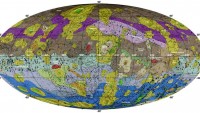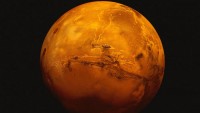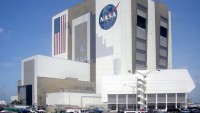3 Billion Miles Later, NASA's New Horizons Spacecraft Finally Nears Pluto
| Cory Doyle | | Nov 19, 2014 03:54 PM EST |
(Photo : NASA ) NASA's New Horizons spacecraft aims to gather information as it flies by Pluto.
NASA's New Horizons spacecraft, which was launched nearly nine years ago, and aims to gather information as it flies by Pluto, will be coming out of "hibernation" on December 6.
The $650 million unmanned spacecraft was launched from Cape Canaveral, Florida on Jan. 19, 2006. The main purpose of the mission was to gather data and information while the spacecraft flies by Pluto in a six-month long process, and will then move on to study certain objects in the Kuiper Belt.
Like Us on Facebook
Although New Horizons will reportedly begin conducting its studies and gathering data on Jan. 15, NASA will be taking the spacecraft out of hibernation in December for a month-long process in preparation of the flyby.
Hibernation is a technique used by NASA in an effort to conserve the spacecraft's resources while it's traveling through the solar system. Basically everything electronic is shut down during hibernation except for monitors and a transmission for weekly status updates.
Once woken up, New Horizons will then send a confirmation back to Earth. But because the spacecraft is currently about 2.9 billion miles away, NASA won't be able to receive the transmission until about four and half hours later.
The nuclear-powered spacecraft is equipped with advanced instruments including compact multicolor and high-resolution telescopic cameras, as well as ultraviolet and two-particle spectrometers, according to Gizmag. New Horizon's will be using these instruments during the flyby when studying multiple aspects of Pluto including its structure, climate and its moons.
The timing for the mission was chosen for a specific reason; NASA wants to capitalize on the opportunity to study all aspects of Pluto during its "late summer" period, as the dwarf planet will soon begin to freeze over as it endures another 100-year long winter.
The mission will be ongoing for six months after Jan. 15, but the spacecraft will record so much data that NASA won't even be able to receive transmissions and analyze it all until October 2016, Gimag reports.
TagsNASA, New Horizons Spacefraft, Pluto, Huiper Belt, space exploration, Hibernation
©2015 Chinatopix All rights reserved. Do not reproduce without permission
 NASA Reveals Highly Detailed Geological Map of Asteroid Vesta
NASA Reveals Highly Detailed Geological Map of Asteroid Vesta- NASA Gives Go Signal to Build Spacecraft Headed for Mars in 2016
 Zero Gravity 3D Printer Now Installed at the International Space Station
Zero Gravity 3D Printer Now Installed at the International Space Station NASA Shows Worldwide CO2 Emissions in Breathtaking Simulation
NASA Shows Worldwide CO2 Emissions in Breathtaking Simulation Humans To Visit Mars by 2035, NASA Says
Humans To Visit Mars by 2035, NASA Says NASA Aims to Turn Flying Cars Into a Reality
NASA Aims to Turn Flying Cars Into a Reality
EDITOR'S PICKS
-

Did the Trump administration just announce plans for a trade war with ‘hostile’ China and Russia?
-

US Senate passes Taiwan travel bill slammed by China
-

As Yan Sihong’s family grieves, here are other Chinese students who went missing abroad. Some have never been found
-

Beijing blasts Western critics who ‘smear China’ with the term sharp power
-

China Envoy Seeks to Defuse Tensions With U.S. as a Trade War Brews
-

Singapore's Deputy PM Provides Bitcoin Vote of Confidence Amid China's Blanket Bans
-

China warns investors over risks in overseas virtual currency trading
-

Chinese government most trustworthy: survey
-

Kashima Antlers On Course For Back-To-Back Titles
MOST POPULAR
LATEST NEWS
Zhou Yongkang: China's Former Security Chief Sentenced to Life in Prison

China's former Chief of the Ministry of Public Security, Zhou Yongkang, has been given a life sentence after he was found guilty of abusing his office, bribery and deliberately ... Full Article
TRENDING STORY

China Pork Prices Expected to Stabilize As The Supplies Recover

Elephone P9000 Smartphone is now on Sale on Amazon India

There's a Big Chance Cliffhangers Won't Still Be Resolved When Grey's Anatomy Season 13 Returns

Supreme Court Ruled on Samsung vs Apple Dispute for Patent Infringement

Microsoft Surface Pro 5 Rumors and Release Date: What is the Latest?










